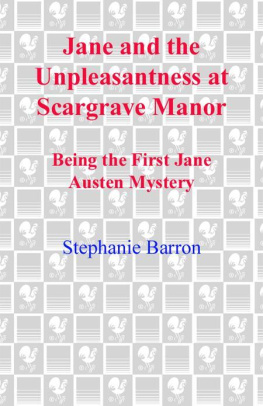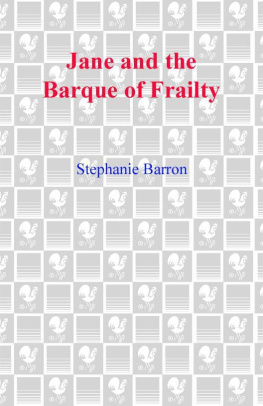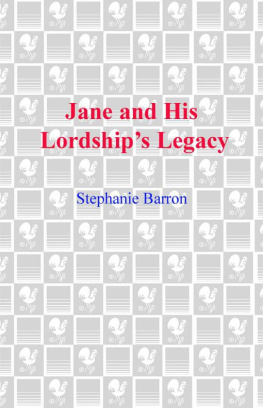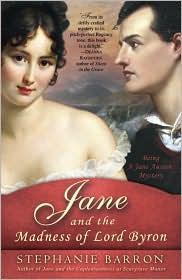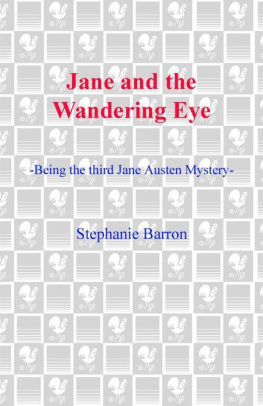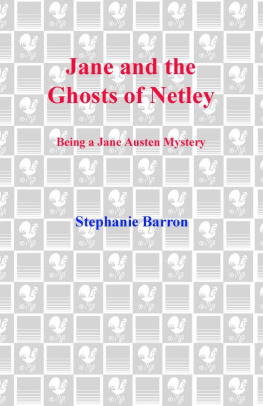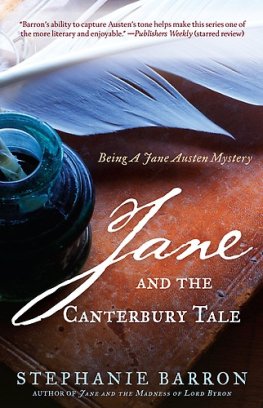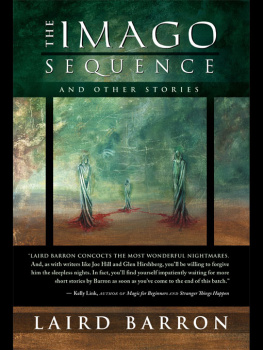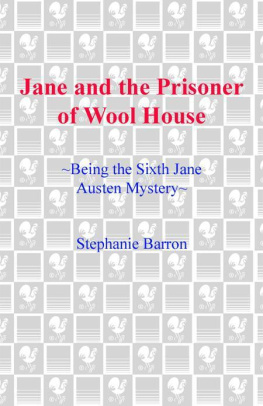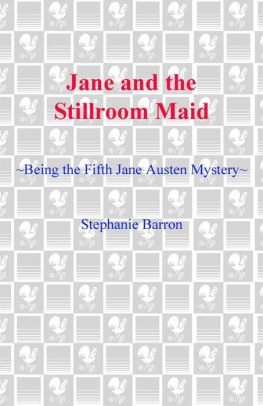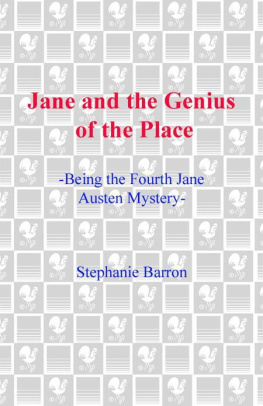Annotation
A light-hearted mystery... The most fun is that 'Jane Austen' is in the middle of it, witty and logical, a foil to some of the ladies who primp, faint and swoon.
Stephanie Barron
Jane and the Unpleasantness at Scargrave Manor
Being the First Jane Austen Mystery
This book is dedicated with love
to the memory of Cass Sibre,
in whose library, at the age of twelve,
I first discovered Jane Austen.
Editor's foreword
IN THE SPRING OF 1995, I VISITED MY GOOD FRIENDS Paul and Lucy Westmoreland. The Westmorelands are of old Baltimore stock, tracing their lineage to a founder of the state of Maryland, and their home, Dunready Manor; dates to the Georgian period. The Westmorelands had recently completed the renovation of an outbuilding on the estate, the former overseer's house, an extensive project of rebuilding and restoration.
Rescuing the solid stone foundation proved a formidable task. Used for decades -- perhaps even more than a century -- as a coal cellar, the enormous rock-lined room had to be emptied of its inky contents before being painstakingly sandblasted and lined with concrete. New support pillars were installed, new doors and stairways, and gradually the aged stone of the house's base assumed its former beauty and charm. But more important was the discovery made in the initial stages of the cellar's renovation. Beneath the hills of coal dust, rats' bones, discarded timbers, and unidentifiable rags were several boxes of old family records. The Westmorelands placed them in a storage shed on the property and promptly forgot about them in the flurry of installing the house's new kitchen. But when I visited them that spring, we spent a rainy afternoon in the storage shed, carefully leafing through the fragile yellowed papers, and came to the conclusion that a professional curator was the only solution.
For what we found that day was no less than an entire series of manuscripts we believed had been written by Jane Austen, a distant relative of the Westmoreland line. A daughter of Austen's brother James had married a man whose sister married a British Westmoreland -- and by this circuitous route the manuscripts had made their way into the Westmoreland family and, eventually, to the branch of that family in the United States. There they were placed for safekeeping in the cellar, where later generations covered them with coal.
The Westmorelands delivered the manuscripts for restoration to a local rare-books curator of their acquaintance and debated donating them to the Johns Hopkins University Library. Other claims -- Austen collections at Paul's alma mater, Williams College, and elsewhere in the country, not to mention Oxford's Bodleian Library -- competed for the gift. In the meanwhile, however, as the manuscripts were restored, they turned them over to me.
The Westmorelands are possessed of an imaginative spirit and enjoyment of life that extends to the reading of detective fiction. And what so struck them about these manuscripts, apparently written by Austen herself, is that they recount experiences heretofore unknown to Austen scholars. Narratives in the form of journal entries and letters to her sister, Cassandra, and intended for her nieces -- which perhaps explains their eventual appearance in the Westmoreland family line, united as it is to the family of James Austen's daughter -- these manuscripts were never meant to be published. They are personal records of mysteries Jane Austen encountered arid solved in the course of her short life.
I suggested that the best editor for such works would be an Austen scholar. The Westmorelands demurred. Knowing of my own interest in detective fiction and feeling that the manuscripts' discovery was in part my own, they asked that I undertake the task of editing the notebooks for publication.
FOR A WOMAN WHOSE WORK HAS ENDURED NEARLY TWO centuries, Jane Austen remains in large part a mystery herself. What is known of her life comes principally from her surviving letters and the memoirs of family members written after her death, from which several scholars have drawn admirable biographies.
Since many of her letters were written to her sister, Cassandra, who destroyed them after Jane's death, whole passages of Austen's life remain dark. The discovery of letters sent to Cassandra, along with the journal accounts I have edited here, must be considered a new window on the author's experience.
Jane Austen was born on December 16, 1775, half a year after the outbreak of hostilities in the British colonies of America and at the height of the reign of His Majesty George III. The daughter of an Oxford-educated clergyman of modest means, she grew up surrounded by her six brothers and one sister in the small parsonage at Steventon, in Hampshire. Through the course of her forty-two years, France would be convulsed by revolution; Napoleon would rise to power; George III would go slowly mad, and his rule give way to the Regency of his son, George IV. It was a turbulent time in British history, in which the Tory (conservative and royalist) Austens would play no small part. Jane Austen's brother Frank, a seaman from his early adolescence, served under Horatio Nelson at the Battle of Trafalgar and rose to become First Lord of the Admiralty at the age of eighty-nine; her younger brother, Charles, had a similarly distinguished, though less lofty, naval career. That Jane was aware of and compelled by questions of politics is evident in her letters to her family, and indeed in much of her more famous writing; for example, she addressed the moral turpitude of naval officers in Mansfield Park, the work she considered her most ambitious, where the themes of ecclesiastical reform and slaveholding in the Indies are also subjected to her caustic wit. That her fiction was drawn from events in her own life, or from her understanding of the experiences of others within her social set, is apparent from her reaction to events recounted in this memoir.
The bulk of her fiction was written in its initial form when Jane was in her late teens and early twenties; she refined and finally published it during the Regency, which officially began in 1810, nearly eight years following the action of this manuscript. The Regency in England had as its counterpart the height of the Napoleonic Empire in France, and despite the ongoing state of war between the two nations, French fashions and political thought traveled across the Channel to powerfully influence English habits. Wealth and personal display were considered fashionable, and the social freedoms accorded women were somewhat greater than those they would enjoy during Victoria's reign later in the century. Dress was less modest, contact between the sexes less constrained, and the notion of a lady writing novels -- or engaging in detection -- was permissible according to the mores of Austen's time.
Austen was recognized by those in her circle as a highly intelligent woman. That she often felt frustrated by the limited experience and opportunity accorded women is evident in this manuscript and elsewhere. Her father had attempted to ignore her sex in one important aspect when he sent Cassandra and Jane, then seven, to Oxford for private instruction; but Austen professed herself to be only half-educated, because she was denied the knowledge of Greek and Latin offered her brothers.



